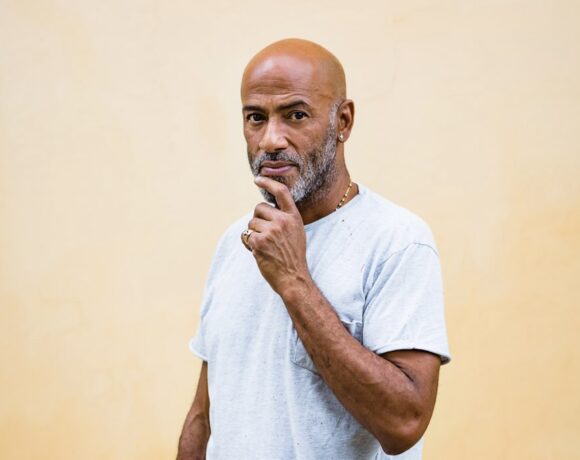«A monk who believes in art, despite everything» — this is how the Ukrainian artist Valeo Kopysov describes his way. He works in various genres: graffiti and street art, painting and performance, photography, and video art. The last one was distributed at the Gogol Fest in Kyiv, in Kherson Terra Futura, Mycelium 2.0, and at various group and solo exhibitions (Kaohsiung, Odessa, Kherson). This form of art will be discussed: video art in which he documents the life of the homeless people.
To understand the art of Valeo Kopysov, it is enough to dive a little into that part of the Ukrainian art scene that represents the lifestyle of the homeless in an urban environment. A striking example, in this case, is the Kharkiv school of photography, which is associated with the documentation of the life of the marginal segments of society. A strong personality on this list is Boris Mikhailov. In a series of works, «Case History» (1997 — 1998), he depicts idle homeless hedonistic people who drink and have fun. In a sense, Valeo Kopysov continues the traditions of the Kharkiv photographer, takes the same object of study as a basis, and examines it through the lens not only in photography but also in video art. True, when he began to do this, he knew nothing about Mikhailov or the history of photography.
Kopysov explores the themes of the life of the homeless, but unlike Boris’s documentation, he exposes their calmness, serenity, and sensual nature. For example, in the video «Sleeping Beauty» video, a man is sleeping on the street near the highway, cars are rushing against him, but he does not even wake up from this noise.
In 2007, when Valeo lived in Kherson, a small town in southern Ukraine, he became interested in graffiti. Most of the time the 17-year-old artist spent on the street, he was interested in what the city breathes and immerses himself in the underground. He and his friends climbed construction sites. In warm weather, the homeless lived in piles of garbage and created barricades of jackets and mattresses, blankets, and packages to indicate that the territory was occupied.
«When we painted with aerosol cans, everyone complained: both drug addicts and homeless people. The abandoned house gave outsiders freedom of expression», — Valeo recalls. Artists were asked to portray naked women or draw a politician with a penis in his mouth — most often, the requests were humorous and sexual.
In 2009 he was in the Pafos (which means «Pathos») team together with the artist Sergey Serko (in 2011, the artist Marianna Tarish will join them and create the VacciNation art group). They videotaped how they drew graffiti and inserted footage of homeless people who were asked to say «Pafos» on camera — it was a ROFL on celebrities who popularize no-names and act as experts outside the field of their expertise.
Now Valeo lives in Kyiv, and in the frames shows the life of the capital’s homeless. As in any big city, they have become a regular part of city life, but the 2020 pandemic has increased their number: people have lost their jobs, left without a roof over their heads, and according to official statistics, there are 20 thousand of them in the capital alone.
In Kopysov’s video art, there is an unadorned collision with reality, reflecting the artist’s lifestyle: he is not homeless but considers himself an ascetic person and often renounces comfort, like an outsider monk. He hitchhiked a lot in Ukraine, Abkhazia, Russia, and Asia, slept at bus stations and train stations in Sochi and Krasnodar, Odessa, and Vinnytsia. He even spent the night in the New Athos monastery in Abkhazia, and sometimes he just knocked on the house and asked to spend the night. He still does not have a permanent place of residence: he lives in shifts with his girlfriend, with his older brother, and right in the warehouse, where he works as a storekeeper.
More often, Valeo takes pictures of the homeless in a sleeping position. However, filming a person in such a state provokes an important question: how ethical it is to do this if they did not consent to film and, in general, do not have leverage. Valeo describes his shooting style as «documentary-sensual fixation without “position zero”». Remaining indifferent when a person feels terrible is unacceptable for him.
«I associate my video art with documentary films, where the concept of ethics has an amorphous form since the process always happens at lightning speed, and you never know how the situation will go, — the artist explains his position. — But of course, I do not forget that in any situation, you need to remain human. Usually, after the shoot, I come up and ask how the homeless person feels and whether he needs help».
Bakyeva Marina
Info:
 Valeo Kopysov video art «Sleeping beauty», 2019, Courtesy of Valeo Kopysov (video frame)
Valeo Kopysov video art «Sleeping beauty», 2019, Courtesy of Valeo Kopysov (video frame)
 Valeo Kopysov video art «Abduction of old men», 2015, Courtesy of Valeo Kopysov (video frame)
Valeo Kopysov video art «Abduction of old men», 2015, Courtesy of Valeo Kopysov (video frame)
 Valeo Kopysov video art «Abduction of old men», 2015, Courtesy of Valeo Kopysov (video frame)
Valeo Kopysov video art «Abduction of old men», 2015, Courtesy of Valeo Kopysov (video frame)
 Valeo Kopysov video art «Eternal Dream», 2020, Courtesy of Valeo Kopysov (video frame)
Valeo Kopysov video art «Eternal Dream», 2020, Courtesy of Valeo Kopysov (video frame)

is a contemporary art magazine since 1980






NO COMMENT